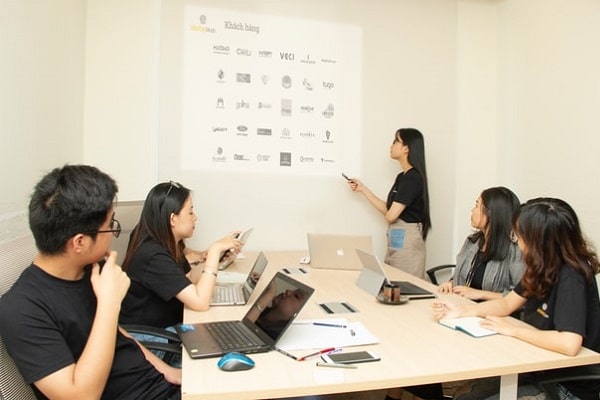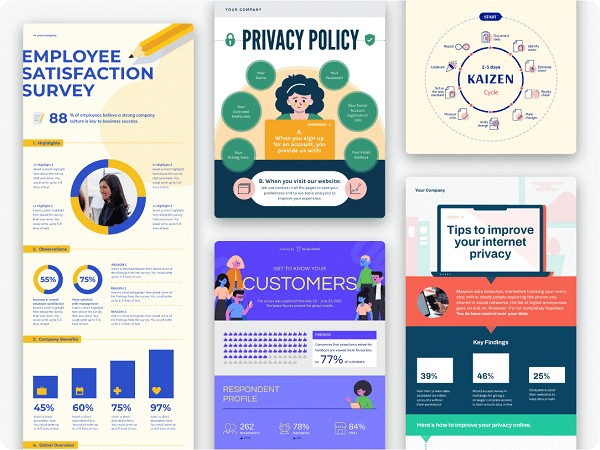
Source
Only around 36% of employees are engaged at a workplace. Around half of them are disengaged and more than 10% are actively disengaged.
Employee engagement is vital to the working of an establishment, yet is so tricky to master.
Visual engagement tools such as infographics can go a long way in keeping employees happy and focused.
Read on to know how you can incorporate infographics in day-to-day office activities to boost employee engagement.
How to use Infographics to help engage your employees
Infographics have been the toast of the online spaces for a while now.
An infographic is an appealing way to present tedious data, weave stories out of observations and grab the attention of everyone in a room.
While brands have been increasingly using infographics to woo customers, they offer great advantages to be used in employee engagement tactics as well.
Replacing textual and verbal pieces of information with vibrant infographics helps grab the attention of the receiver almost immediately. You get to explain what you want better and summarize information better in a way that isn’t overwhelming.
Here is how you can use infographics in your workplace to engage employees better and boost their productivity.
1. Explain your company values
If we are being realistic, company values and vision are some of the things that an employee is least interested in — despite them being of critical importance. It goes without saying that an employee should be aligned with their company’s values.
Explaining your vision and values with the help of infographics helps them understand the bigger picture better. They understand both the company’s vision and their role in it. It helps them place the meaning behind the tasks they perform.
This way, they become more engaged in it as they feel more than just an employee. They realize that they are a part of the company and an important one at that. Emotional attachment to their work helps them do better in the long run.
You can divide the vision you present for your employees into various segments such as goals, values, what their role is and how they help in building your team. This simplifies the information and creates a fulfilling narrative for employees to fall back on in case they face difficulties.
2. Employee training
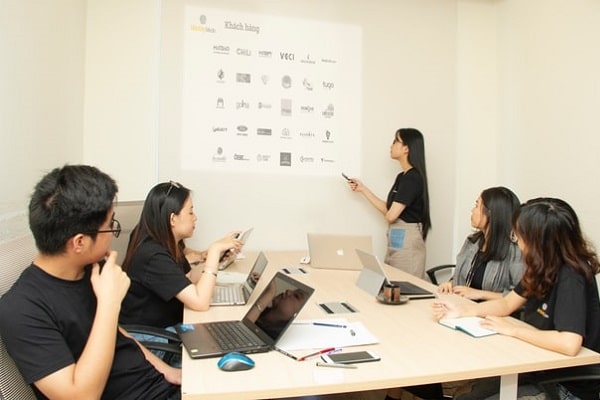
Source
Employee training is one of the most proactive areas to explore infographics. They offer a way to condense winding educational material into consumable pieces of information. They are both easy to track and go back to in case the employee forgets something.
They are especially great when the training is supposed to be physical, operating machinery for example. It is easier to demonstrate the correct and wrong ways to do it when presented in a visual medium that you can consume at your own pace.
This is not to say that you should turn every piece of information into infographics. Text and videos are equally important in delivery in educating and training employees. The idea should be to break walls of text with quick infographics that capture the attention of the reader.
3. Work meetings
Including visual tools in your day-to-day operations is a great way to engage your employees better. Many team leaders refrain from it under the false assumption that infographics are hard to make. That is completely untrue.
You can make simple infographics in minutes. They don’t have to be intricately detailed or throughout — just something that explains the matter best. Infographics are a much better alternative than simply speaking to explain a project.
It is especially beneficial for new workers who may not be accustomed to the company culture. Receiving information in such simplified terms makes it easier for them to follow it. Moreover, this approach also livens up team meetings.
Another benefit of this approach lies in the shareable nature of infographics. Simply share the graphic with your team once the meeting is over. They can refer back to it for help, helping them complete tasks more efficiently.
4. General office discussions
Who says infographics cannot be a part of your office parties?
When they can make work fun, they can certainly elevate your social gatherings as well. For starters, you can use them to summarize an event or trip.
Listing out the events, requirements, itinerary needed along with the dos and don’ts helps create a clearer picture of the event. It lets the employees know what to expect. It also decreases unnecessary confusion and queries you may receive.
You can use them during events to, say, explain the games you play. Or you can have them describe the general conduct you need employees to have for a leisure event. These are simple techniques that go a long way in both engaging and educating employees.
Once again, employees can share them amongst themselves to look over whenever they need to. You will not have to repeat the same information and can also reach out to employees that may not be currently present.
5. Workplace procedures
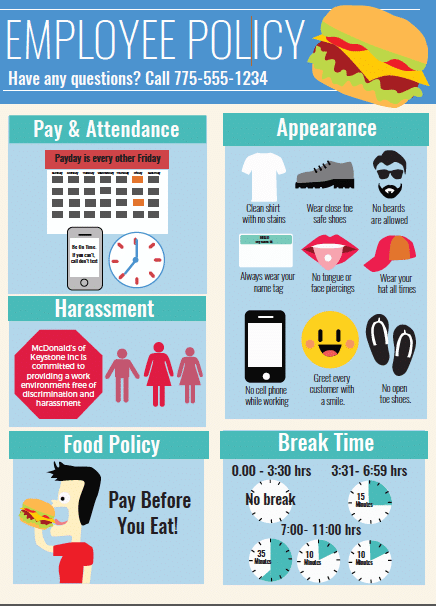
Source
Every workplace has certain procedures — whether they are for mundane tasks like filling out registers and forms, or for things like operating heavy machinery. These are tasks that are performed routinely and in repetition.
By creating visuals to simply explain these tasks, you encourage your team to perform them efficiently and in a timely manner. Something as simple as making entries about the items you take from the storage can be regulated via infographics.
People will know what they are supposed to do and how they are supposed to do it. It relieves them of the hesitation to ask about trivial things. Ultimately, it makes for a smooth flow of operations.
Moreover, visualization of complex procedures like documentation helps employees understand it better. They would now be clear about what needs to be done. Though we recommend that you don’t completely do away with the textual information. Use infographics as a visual aid instead of a replacement.
6. Safety procedures
You should probably already be doing this. No employee will go around asking for the safety protocols of their workplace, yet it is something they absolutely should be knowing about. This is even more important for newer employers.
We recommend that you both hand out graphics about the safety protocols and have them be placed all around the workplace. This way you can make sure every employee definitely understands what needs to be understood.
Even if your place of work doesn’t classify as a high-risk area, it is certainly helpful to have useful information like this around. Additionally, it lets your employees know that they work in a safe environment and their company truly cares about their well-being.
7. Relay information
Whether it’s the plan for the next or the dress code or the party at the weekend, virtually any information that needs to be relayed to your employee can be relayed through an infographic. It makes for a fun, engaging way to absorb information that they otherwise might skip on.
Think about it — would you rather send a lengthy email describing the dress code to a new employee or would you rather a few pictures with minimal texts explaining it. You don’t have to do this or every piece of information, only the ones that need simplification.
What is more, you can ask your employees which method they prefer. It will show them that their input matters and you are willing to make changes for them. It promotes organizational transparency and promotes healthy communication.
8. Promote employee well-being
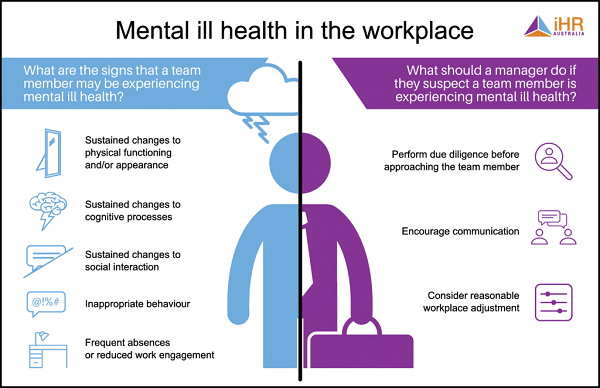
Source
One of the most important aspects of working — especially in the post-pandemic era — is mental health. People’s mental health has been adversely affected during these tough times. Knowing that their company cares about their well-being goes a long way in fostering a positive work environment.
There is a lot you can do from your end. For starters, send out emails with infographics about how to take care of their physical and mental health. You can follow it up with emails about work-life balance.
Practical advice that may help someone in need is better than just stating that you are there for them. Your team can always come back to this information in time of need. Most importantly, it will let them know that they are a valued part of your group.
Moreover, you can conduct sessions promoting their well-being. You can share infographics about what activities they can partake in and what they can do in general for better health. Such an approach encourages them to be honest about any struggles they may be facing.
You can help them overcome them and perform better in general. Employees that feel valued will always strive to perform better on principle.
Conclusion
Incorporating infographics in your day-to-day operations may feel like an insignificant change but can go a long way in retaining the attention of everyone around you and engaging them in the tasks at hand.
Engagement at work can boost productivity by almost 21%.
Happy and dedicated employees are the backbone of any organization. And visual engagement is just the way to do so.
Let us know in the comments what office activities you include infographics in and how they have helped you.
Looking For HR Management System?
Call Pursho @ 0731-6725516
Telegram Group One Must Follow :
For Startups: https://t.me/daily_business_reads

